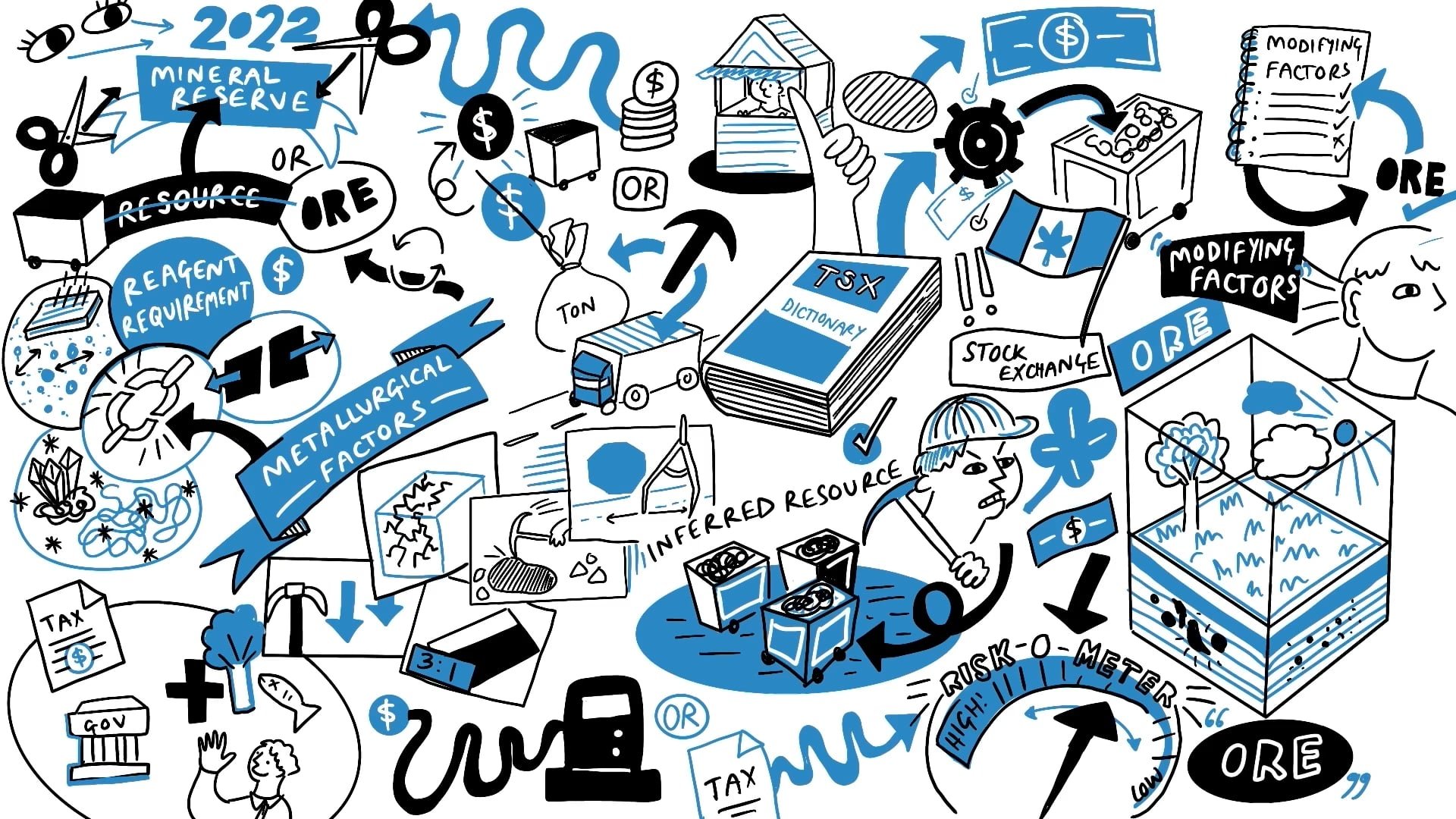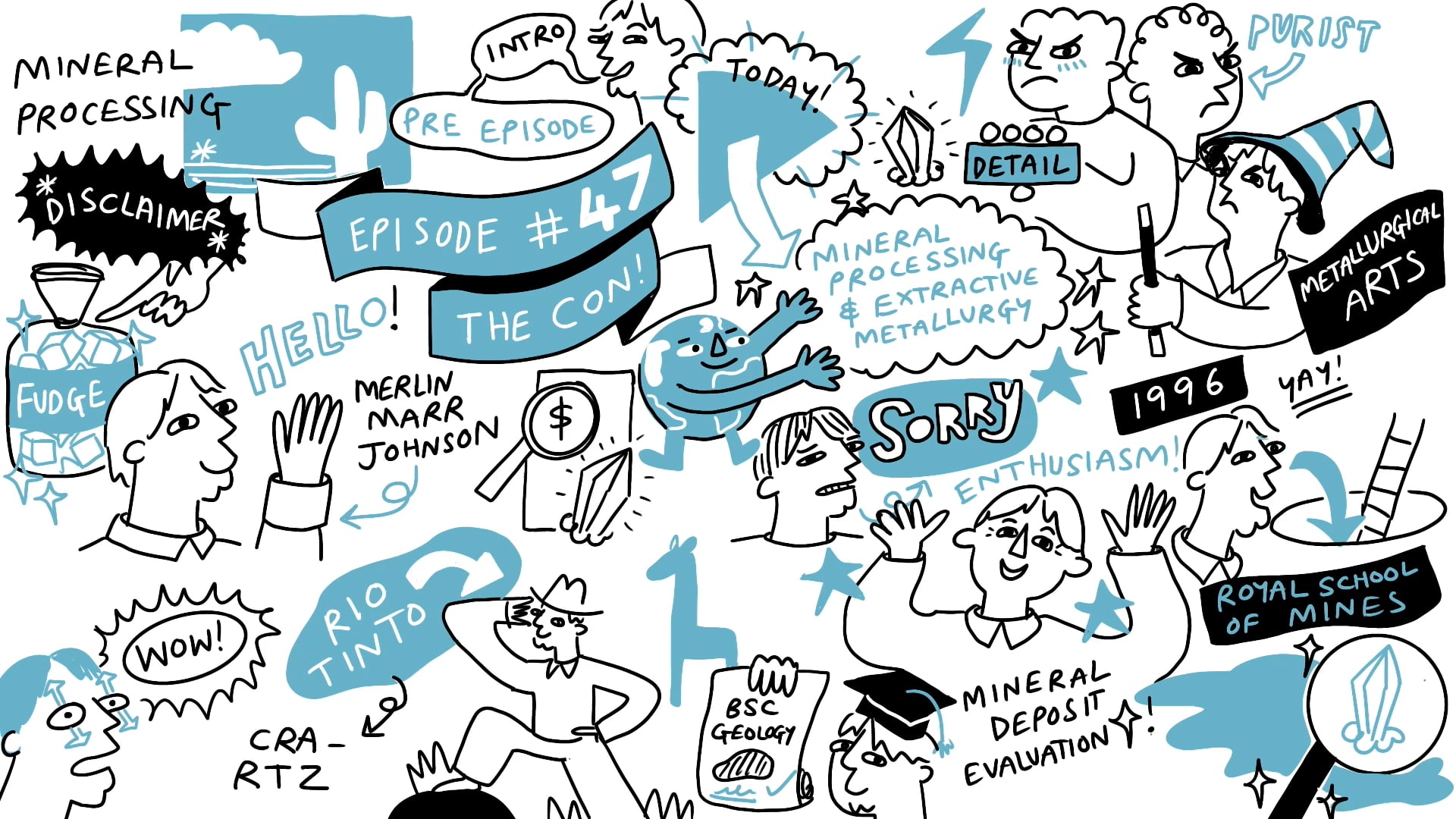Mining: Mine efficiency
.jpg)
More episodes
Transcript
Mine efficiency
So, everything has to be planned out absolutely perfectly. The capital cost on this is huge, the timelines on this are phenomenal as well. What does this kind of mean in terms of investor and understanding what a company does or say when they're going to be targeting this kind of mine? Well, I think the most important thing to look at is cost. How much does it actually cost? What are these different mining methods mean in terms of profitability and reliability?I’ve previously done a review of some Canadian underground mines looked just over 10 deposits. And what we've seen is that the companies, even if they're well established, mining companies tend to overestimate how efficient they're going to be mining. So, the estimate costs versus the actual costs varies considerably in this. In particular, if you're dealing with a company that's producing a Feasibility Study or a PFS, which is going to be made economic by the efficiency of its mining method, then you've got to really stress test it and put a big question mark over this. The Analyst’s Notes that we're working on at the moment involves SSR mining, Alamos, Kirkland Lake, Eldorado Gold, Evolution Mining, Agnico Eagle, RM Gold and Hecla. Looking at a range of deposits, which produce between 60,000oz up to the biggest being 300,000oz. What we've seen is that the operational cost per tonne is highly proportional or related to the throughput rate. And the throughput rate is effectively a function of the width of the ore body. So the wider your ore body, and I'm not talking about strike length, I'm just kind of pure width or thickness. The wider your ore body, the more productive it is, and therefore the lower cost per tonne it's going to be.
Now what we see is that these well-established, very experienced Canadian companies would typically underestimate their operating costs between 30 and 50%. And that's a good working average, is that it's going to cost about $150/t, all in to mine your underground mine. Now, if you consider some prices and basic metals, you can say, well, I mean at $1500 Gold, you're talking about $47/g. So 1500÷32.15, $47/g and at a 90% recovery let's say that's a kind of a standard, you're going to get about $42 back, maybe there's some delusion in there, maybe let's call it $40/g. Now, if you know that your operating cost is in the region of $150/t and your recovered value is around $40/t clearly, you've got to mine at probably around 4g/t to get up to $160/tonne before you're going to make any money at all. So grade is crucial to making money.
If you're going to be operating in Canada, the numbers pretty much show that 4g/t for an underground deposit is the bare minimum. It’s slightly different up at $2,000/oz, you know your recovered value per gramme is kind of probably between 55 and $60/g. So on 4g you're talking about just over $220/t which starts to get pretty punchy, but that reliant on $2,000/oz right through your mine life. Obviously, you can't plan for that, you can't mitigate on that, because the average price has been nowhere near $2,000 over the, let's see, got a 5, 10, or 7, 8-year mine life. So you have to take a conservative number so that you don't go bust through the cycle. And it pretty much means you're unlikely to make any money unless you've got 4g/t. So you're looking at 5g/t or above. Now, that $150/t is for a bunch of operating mines it's an average. Clearly, the narrow you go if you're doing cut and fill, which is a highly selective kind of low productivity rate, it's going to be higher than that; you're probably talking about a cost of 180g/t. If you look at some of the bigger block caving operations around the world, they're running at around $20/t all in. They're probably quote their operating costs, they'll probably say it's $2.5 or $3/t but by the time you've added everything back in, and you actually include the G&A and all of the dewatering in normal environment, it's much closer to $20/t than it is to $2/tonne.
Yes, we've seen some examples where they're in the low teens as well. When I've last did analysis, there was a range it was went between $12/t and $20/t, but it always pays to be slightly more conservative. When you want things $20 a tonne and you look at Copper for example, when copper $6,000/t or $9,000/tonne, 10% grade, you're talking $600 rock, $900 rock 5%, $300 rock to $450 rock per tonne this is and then of course you look at the global average grade of Copper mines around the world at the moment and it's $30, it's 0.5% maybe 0.6%. And so depending on whether the Copper price is $9,000/t, you're talking $45/t rock in the ground. And you think oh look that block caving, they can do it for less than $20 a tonne. So that's why they're doing all these big underground Copper mines as block caving on the big porphyries. Well, yes and no. Big block cave is a highly specialised operation, you've got to really understand your techniques or otherwise you're going to run into troubles with recovery and dilution. And then of course, there is the biggie, which is Capex. A big block caving operation takes years to develop, probably from the financial final investment decision, we're looking at 5 to 6-years of actual development and that is preceded by the large number of years of the studies and the analysis and the technical work to get this actually right and then the Capex is huge as well. So, for something like the resolution copper in Arizona, you're looking at $6 billion worth of Capex to get that mine built or to go in Mongolia, huge Capex figures. So block caving is really only suitable for a handful of companies worldwide, just because the cost and the skills required to do it.
But long hole open stoping, underground mining, very common. And of course, it's got many key advantages to underground mining. One is that the operating temperature doesn't vary very much. Yes, it can get hot underground, particularly the deeper you go or if you're mining in area with a very steep geothermal gradient, but you don't have to deal with weather. So for example, it's suitable for up in the Arctic. It's also got a much, much smaller environmental footprint. It's just a portal at the surface, all you can see is a portal. And if your ventilation raises, or shaft perhaps, but you don't have the scars of a big open pit. And in this current environment of environmental vigilance, shall we say having a reduced surface impact is generally viewed as a good thing. And not only that, we can use the voids you've created from taking out or as a space to store waste material. So you can segmentation you can put in your tailings into the backfill. So the environmental impact of an underground is generally footprint is certainly much smaller, and the environmental impact as a whole can be much less for an underground mine.










































.jpg)
.jpg)
.jpg)















